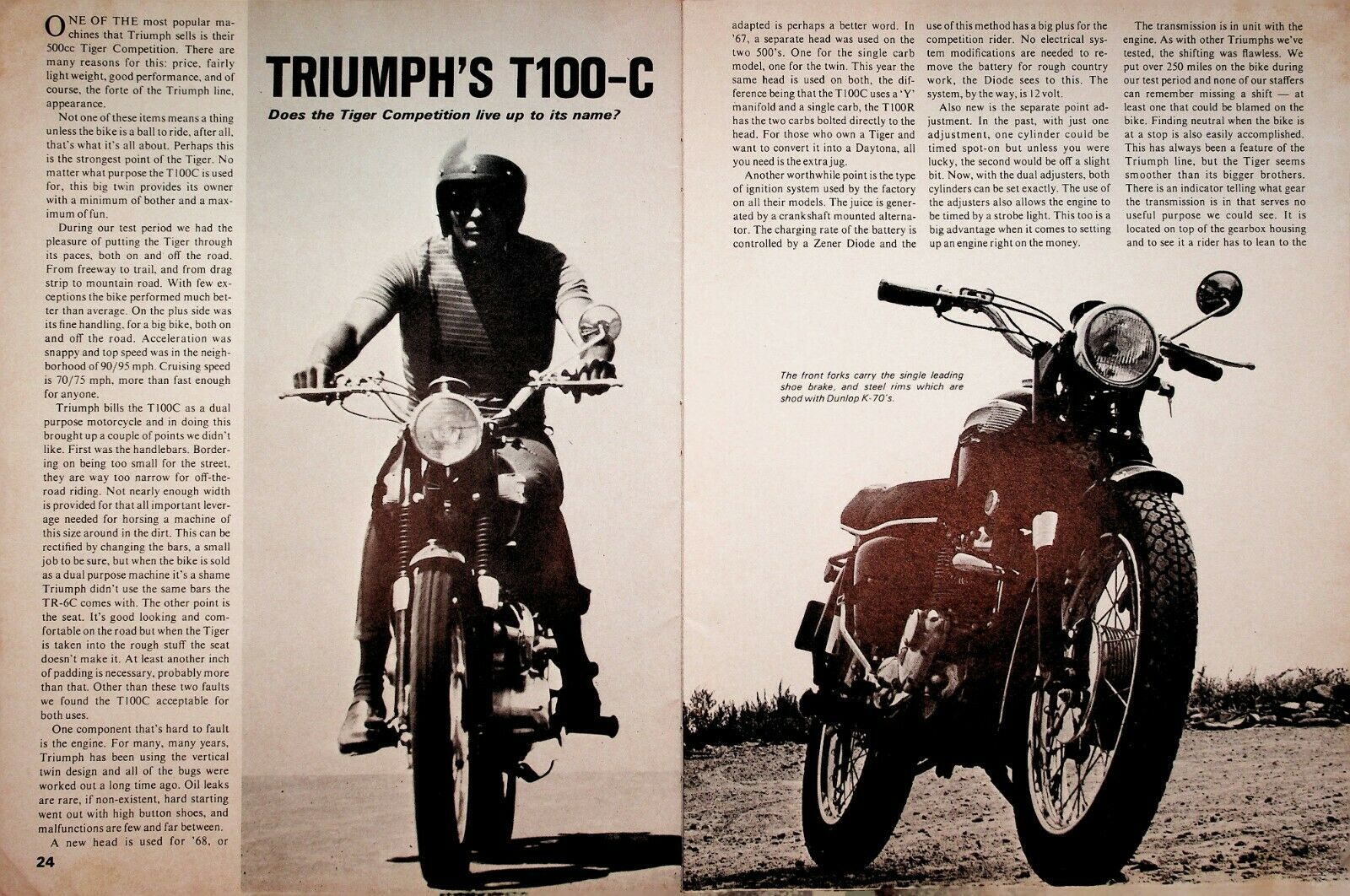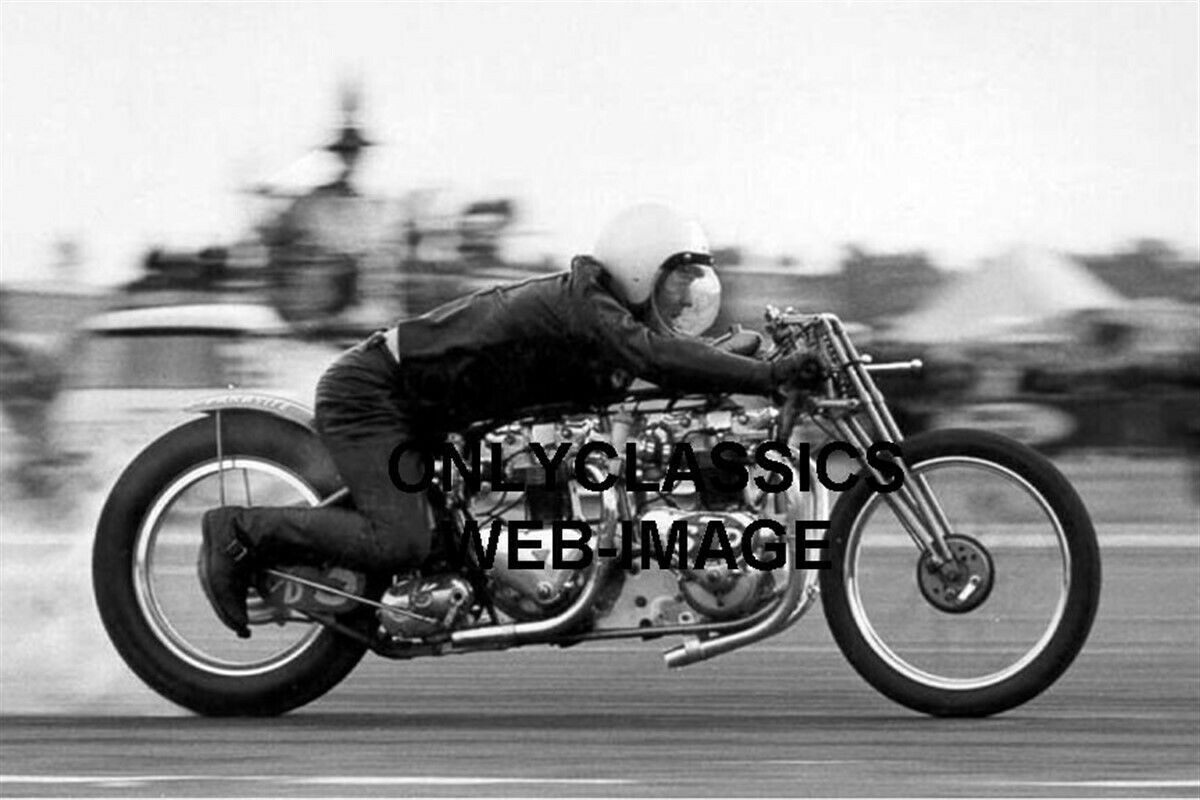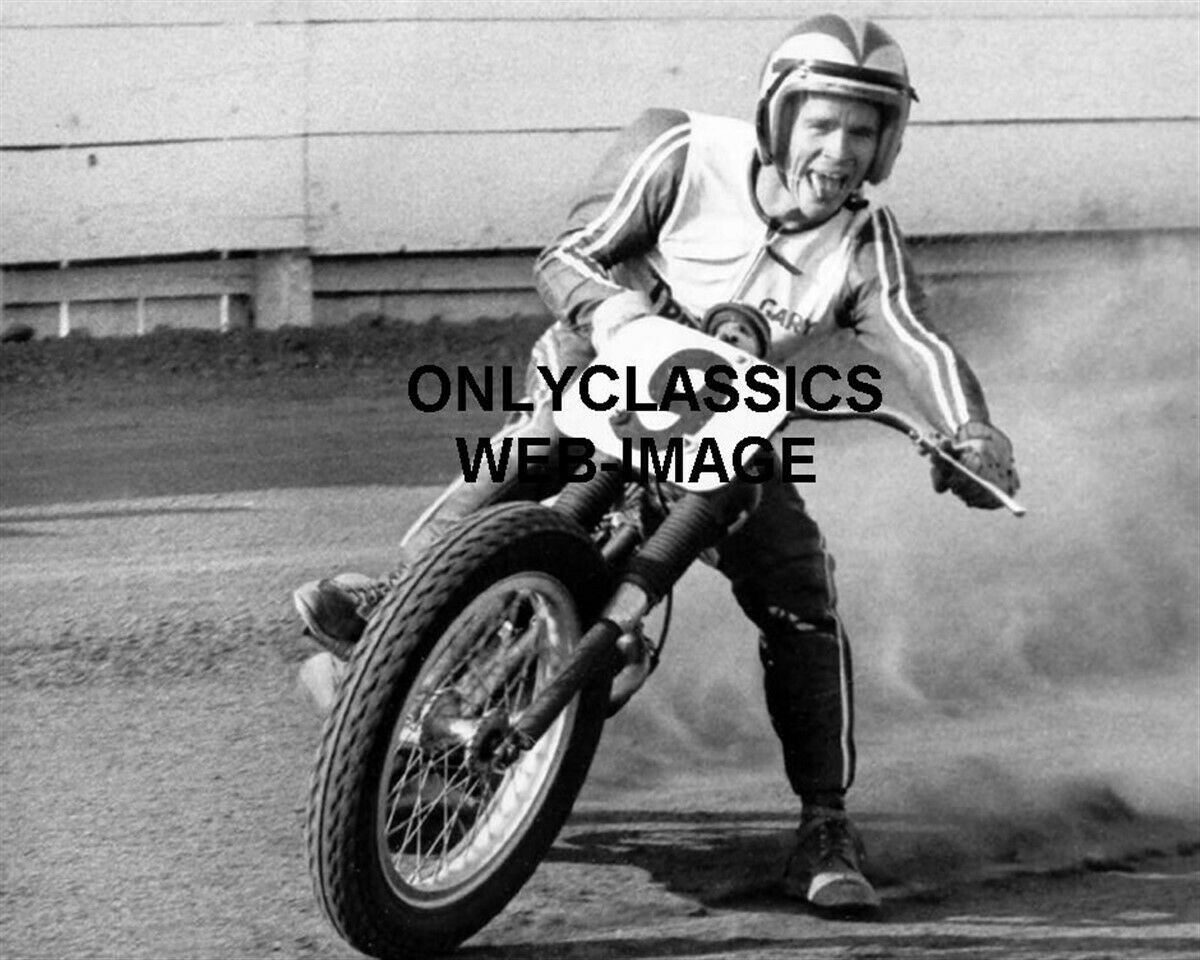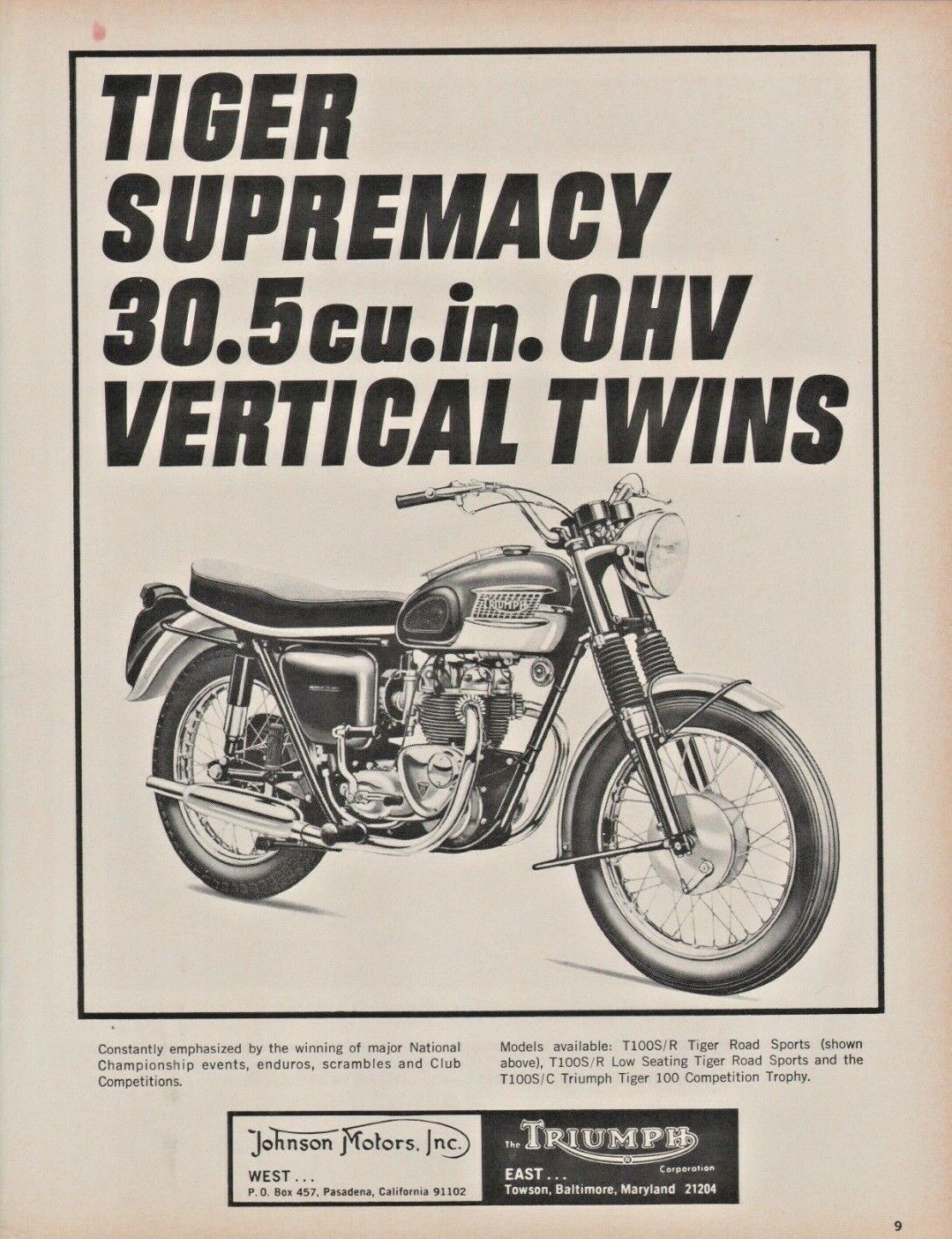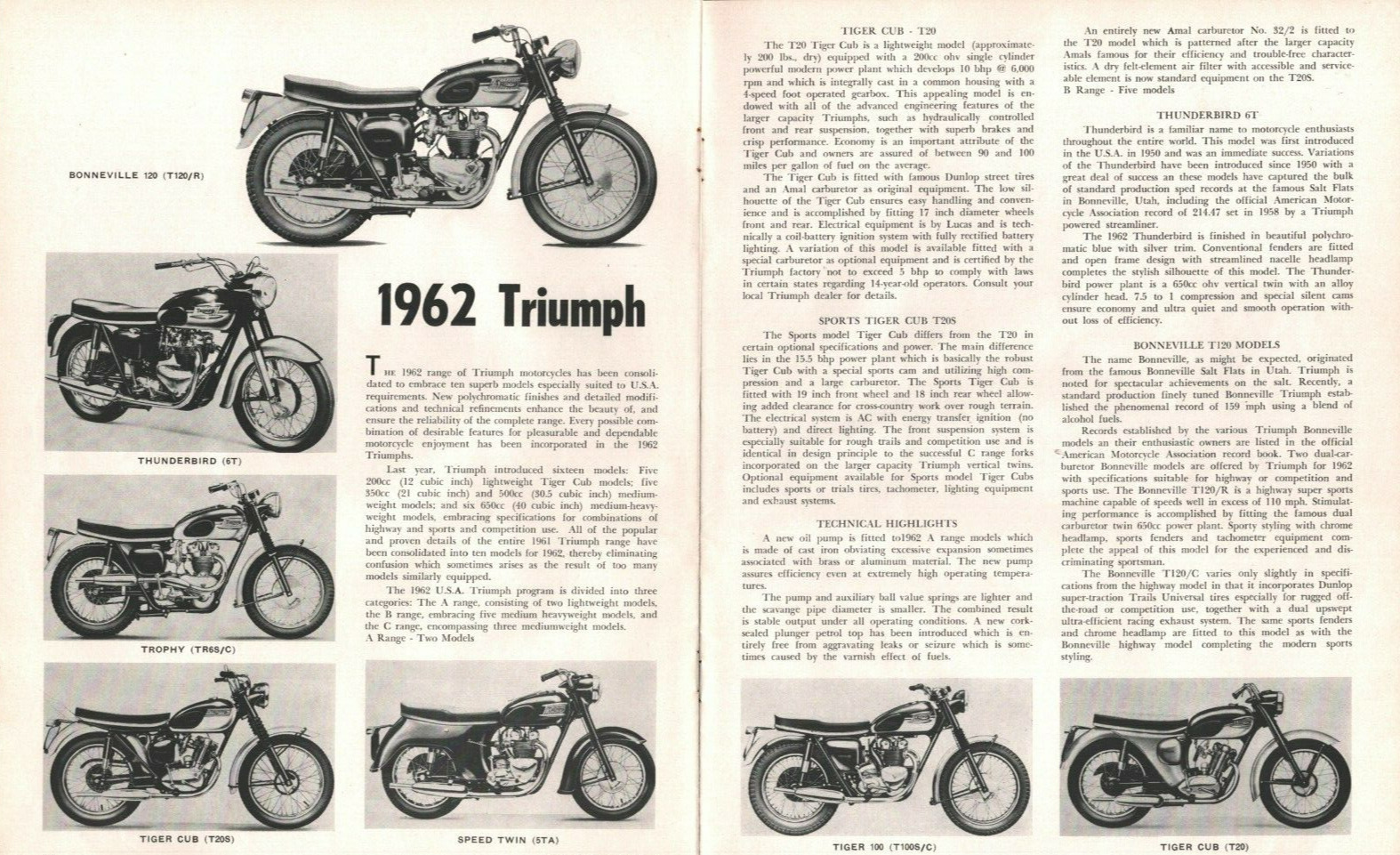-40%
1968 Triumph T100-C Tiger Competition - 6-Page Vintage Motorcycle Test Article
$ 7.37
- Description
- Size Guide
Description
1968 Triumph T100-C Tiger Competition - 6-Page Vintage Motorcycle Test ArticleOriginal, Vintage Magazine article
Page Size: Approx. 8" x 11" (21 cm x 28 cm) each page
Condition: Good
ONE OF THE most popular ma-
chines that Triumph sells is their
500cc Tiger Competition. There are
many reasons for this: price, fairly
light weight, good performance, and of
course, the forte of the Triumph line,
appearance.
Not one of these items means a thing
unless the bike is a ball to ride, after all,
that's what it's all about. Perhaps this
is the strongest point of the Tiger. No
matter what purpose theTlOOC is used
for, this big twin provides its owner
with a minimum of bother and a max-
imum of fun.
During our test period we had the
pleasure of putting the Tiger through
its paces, both on and off the road.
From freeway to trail, and from drag
strip to mountain road. With few ex-
ceptions the bike performed much bet-
ter than average. On the plus side was
its fine handling, for a big bike, both on
and off the road. Acceleration was
snappy and top speed was in the neigh-
borhood of 90/95 mph. Cruising speed
is 70/75 mph. more than fast enough
for anyone.
Triumph bills the T100C as a dual
purpose motorcycle and in doing this
brought up a couple of points we didn’t
like. First was the handlebars. Border-
ing on being too small for the street,
they are way too narrow for off-the-
road riding. Not nearly enough width
is provided for that all important lever-
age needed for horsing a machine of
this size around in the dirt. This can be
rectified by changing the bars, a small
job to be sure, but when the bike is sold
as a dual purpose machine it’s a shame
Triumph didn’t use the same bars the
TR-6C comes with. The other point is
the seat. It’s good looking and com-
fortable on the road but when the Tiger
is taken into the rough stuff the seat
doesn’t make it. At least another inch
of padding is necessary, probably more
than that. Other than these two faults
we found the T100C acceptable for
both uses.
One component that’s hard to fault
is the engine. For many, many years,
Triumph has been using the vertical
twin design and all of the bugs were
worked out a long time ago. Oil leaks
are rare, if non-existent, hard starting
went out with high button shoes, and
malfunctions are few and far between.
A new head is used for ’68, or
adapted is perhaps a better word. In
’67, a separate head was used on the
two 500’s. One for the single carb
model, one for the twin. This year the
same head is used on both, the dif-
ference being that the T100C uses a ‘ Y’
manifold and a single carb, the T100R.
has the two carbs bolted directly to the
head. For those who own a Tiger and
want to convert it into a Daytona, all
you need is the extra jug.
Another worthwhile point is the type
of ignition system used by the factory
on all their models. The juice is gener-
ated by a crankshaft mounted alterna-
tor. The charging rate of the battery is
controlled by a Zener Diode and the
use of this method has a big plus for the
competition rider. No electrical sys-
tem modifications are needed to re-
move the battery for rough country
work, the Diode sees to this. The
system, by the way, is 12 volt.
Also new is the separate point ad-
justment. In the past, with just one
adjustment, one cylinder could be
timed spot-on but unless you were
lucky, the second would be off a slight
bit. Now, with the dual adjusters, both
cylinders can be set exactly. The use of
the adjusters also allows the engine to
be timed by a strobe light. This too is a
big advantage when it comes to setting
up an engine right on the money.
The transmission is in unit with the
engine. As with other Triumphs we’ve
tested, the shifting was flawless. We
put over 250 miles on the bike during
our test period and none of our staffers
can remember missing a shift — at
least one that could be blamed on the
bike. Finding neutral when the bike is
at a stop is also easily accomplished.
This has always been a feature of the
Triumph line, but the Tiger seems
smoother than its bigger brothers.
There is an indicator telling what gear
the transmission is in that serves no
useful purpose we could see. It is
located on top of the gearbox housing
and to see it a rider has to lean to the...
12633c-6808-09
